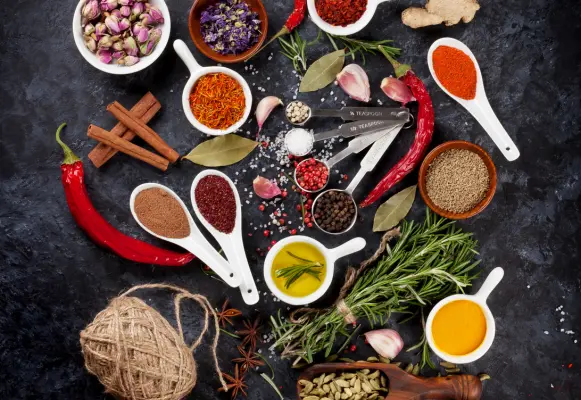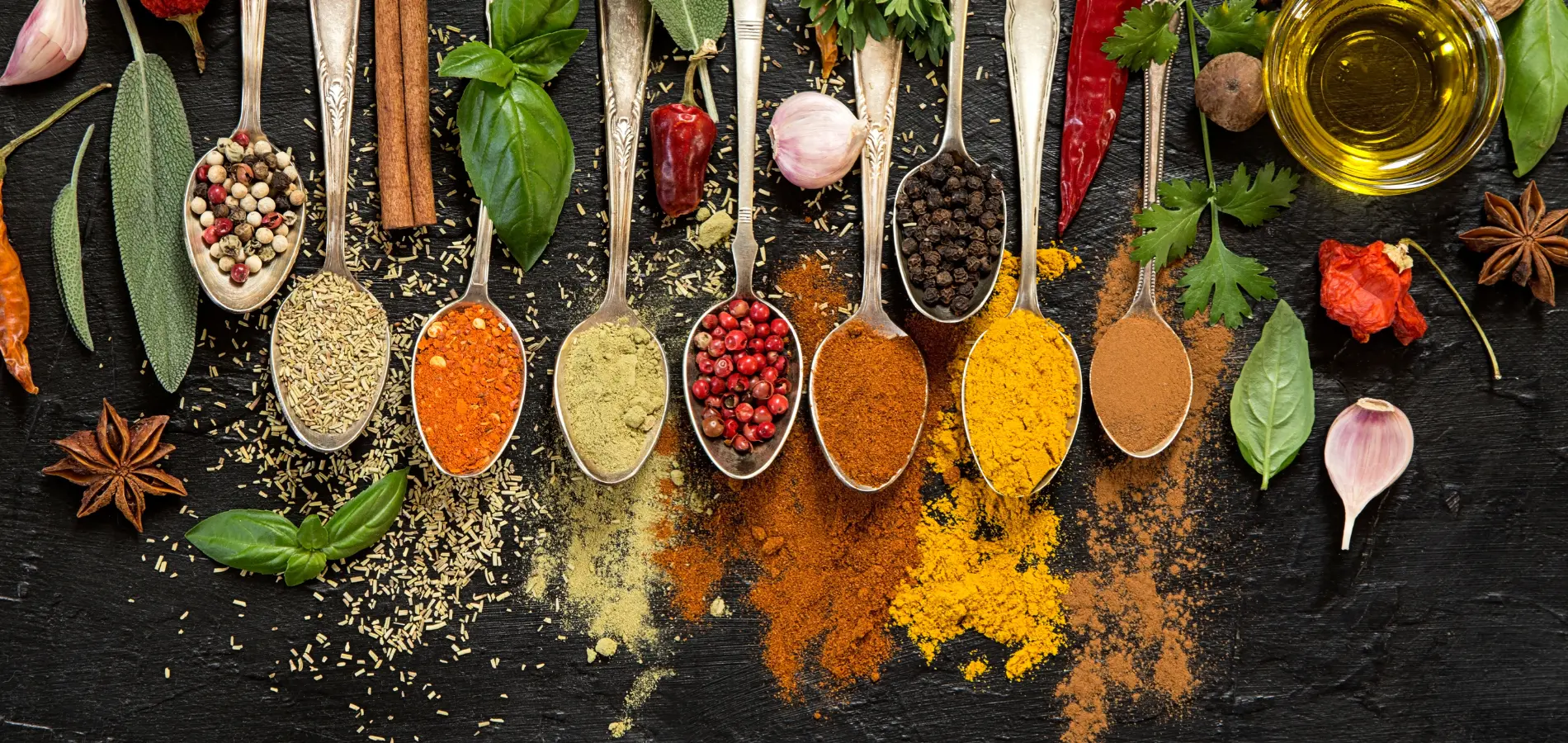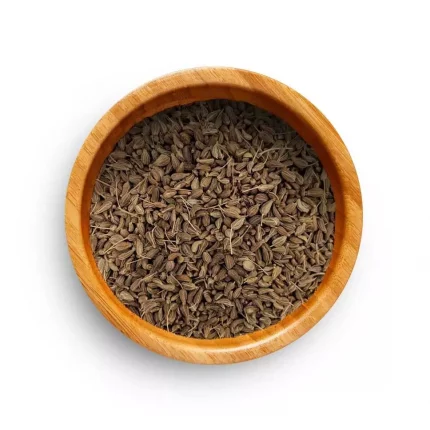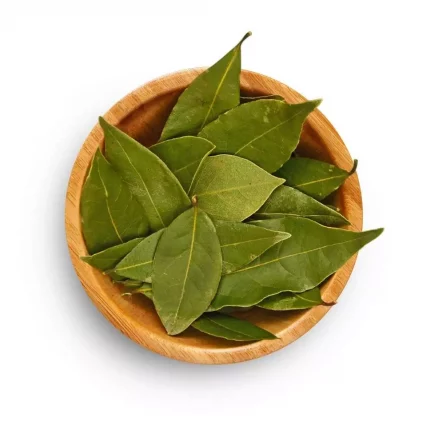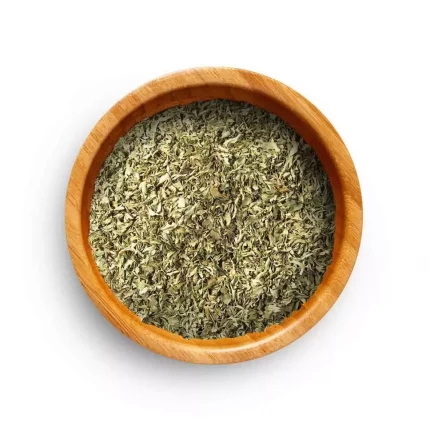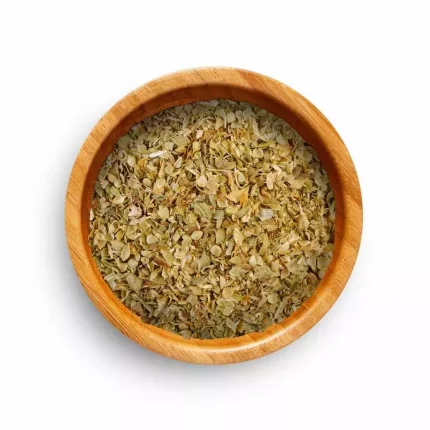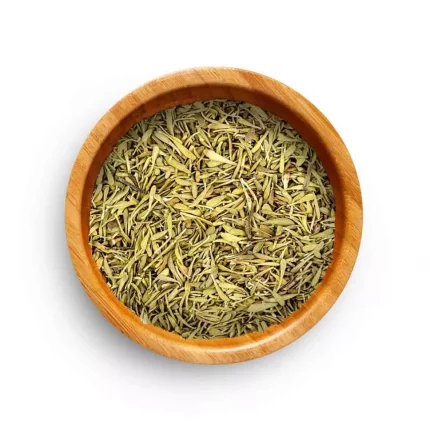We all love that extra tang and flavour herbs and spices add to our delicacies, but have you ever wondered what distinguishes one from the other? Herbs and spices have been enchanting our taste buds for generations, while traversing the diverse landscapes of cultures and traditions. Picture the vivid burst of life that freshly chopped basil lends to a humble pasta dish, or the cozy embrace of cinnamon in a steaming cup of spiced chai latte. In this blog we unravel the unique qualities that bring out their distinct qualities and uses of herbs and spices.
Unveiling the Contrast
Perhaps the most significant contrast between herbs and spices lies in their origins. Herbs typically consist of the plant’s leafy and green portions, including well-known varieties like basil, rosemary, sage, thyme, parsley, and oregano. In contrast, spices can derive from various plant parts such as roots, stems, seeds, fruits, flowers, or bark, encompassing examples like cinnamon, ginger, black pepper, and turmeric. Put simply, if any part of a plant, excluding the leaves, adds flavour to your food, it’s considered a spice.
While certain plants offer both elements, such as cilantro, which provides both its leaves and coriander seeds, others solely provide one or the other. While rosemary roots and nutmeg leaves may not be commonplace in culinary usage, there is always a first time for everything.
Exploring Functions
Herbs can be classified into different types such as culinary, medicinal, sacred and those used for pest control. Herbs used for cooking are mostly from plant leaves, they provide flavour in cooking. These include thyme, lavender, coriander, mint, parsley, basil etc. In the past herbs have been used for medicinal purposes for instance mint extracts used to treat depression and stress. Gardeners also use herbs such as mint, spearmint, peppermint and others a s pest control. These are used to keep flies, ants, fleas, moths and ticks away.
When it comes to spices, they are mostly known to flavour and add taste to food. Apart from that they can also be used for medicinal purposes, for instance the bay leaf oil possesses antifungal and anti-bacterial properties, cinnamon is believed to be reduce blood cholesterol, cloves are used to relieve toothache, cumin keeps the immune system healthy, fenugreek is beneficial to treat diabetes and lower cholesterol, while turmeric is good for the skin.
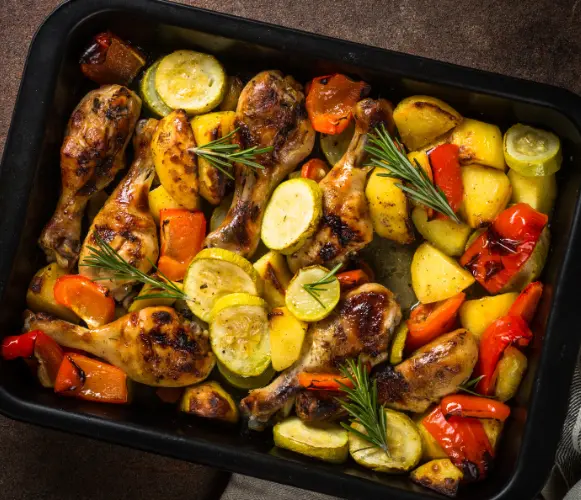
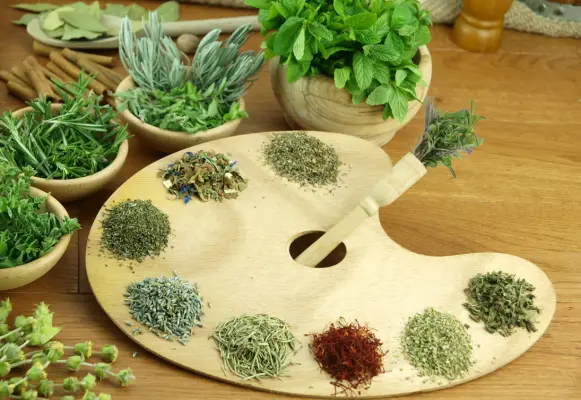
Delving into Usage
One of the other ways to differentiate herbs and spices is looking at the usage. Spices tend to carry a stronger pungency than herbs, this therefore calls for using them in smaller amounts than herbs while cooking.
Cooking with herbs and spices requires different methods. Notably, spices exhibit resilience during extended cooking, steadfastly preserving their flavour. Herbs however, need to be added close to the end of the cooking process, with an exception of rosemary and oregano. It is also important to note that spices are dried before use; when it comes to herbs, you can use them both fresh and dry. Most cooks consider herbs more flavourful while fresh. On different occasions fresh herbs are preferred to dried herbs, for instance basil pesto or using fresh parsley in salads.
Use them Solo or Pair Up?
There are numerous ways you can try out with herbs and spices, but you need to understand how distinct they are. The vibrant and leafy herbs flourish best when added towards the end of cooking to retain their aromatic essence. You can also add them to salads, elevate them by sprinkling freshly chopped basil, or let the zesty charm of cilantro adorn your guacamole. Spices, on the other hand, thrive well when added to the cooking early. Experiment with the warmth of cumin in hearty stews, or the alluring allure of saffron in rice dishes. You can also blend herbs and spices by pairing up earthy rosemary with hearty thyme for roasted meats, or combine the citrusy tang of coriander with the warmth of cayenne for a chicken rub.
The Origin
There are quite a number of herbs and spices we use daily to elevate our meals, only a handful of which originate in the Western Hemisphere. Majority of these herbs and spices that we use grow in the tropical and subtropical regions of the Mediterranean, Southeast Asia and India. At Ceylon Cinnamon Limited, we source our herbs and spices from different parts of the world . From everyday staples like cinnamon, cumin and turmeric to exciting flavours like Cardamom and Chilli. You will find everything you need at Ceylon Cinnamon Limited!
Experiment with the warmth of cumin in hearty stews, or the alluring allure of tumeric in rice dishes. Yet, don’t hesitate to blend these flavour powerhouses for an orchestra of tastes – pair earthy rosemary with hearty thyme for roasted meats, or combine the citrusy tang of coriander with the warmth of cayenne for a chicken rub. Embrace the alchemy of herbs and spices; let them be your palette of culinary artistry.
